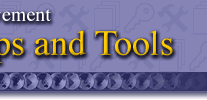 |
||||
|
||||
|
|
 |
In the previous stage, the team defined desired performance in specific and measurable terms. Using those same indicators and measures, describe the current, or actual, performance. Possible sources of performance data include clinic records, ministry of health statistics, and previous projects and studies completed in the same area. Many times, however, existing data on current performance will be insufficient, and you will have to collect data on your own. The data gathered for this stage will serve as the baseline for determining the effectiveness of the interventions. After the interventions have been implemented for a designated time period, you will compare performance data to this baseline data to determine whether or how much performance has changed. In fact, now is the time to start your monitoring and evaluation plan, even though that subject is covered in the Evaluation stage. Knowledgeable measurement, monitoring and evaluation expertise is vital throughout data collection planning and processing. If a monitoring and evaluation expert is not already on your team, now is the time to solicit help and advice. |